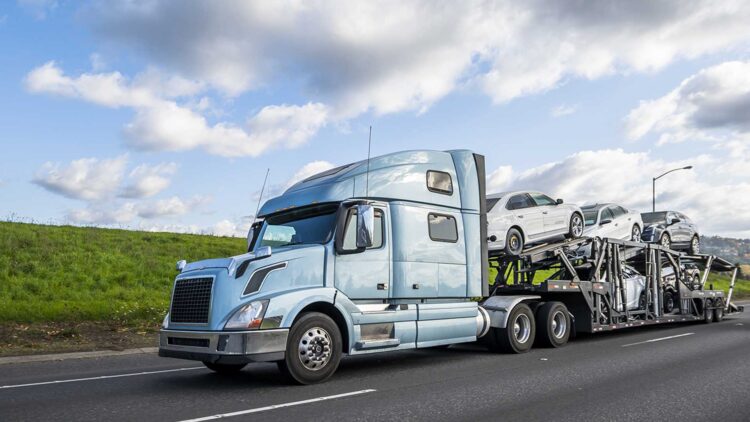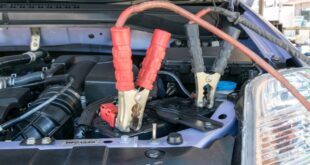Transporting a vehicle from one location to another is more than just a matter of convenience. It can be a necessary part of moving, buying a vehicle from a distance, or transporting a classic or luxury car for a show. But how does one do it safely and effectively? This guide will walk you through the ins and outs of vehicle shipping.
Why Consider Shipping Your Vehicle?
The reasons to consider shipping a vehicle are numerous. Maybe you’re making a cross-country move and want to minimize the wear and tear on your vehicle. Or perhaps you’ve purchased a vintage car from another state and need it delivered to your doorstep.
Regardless of the reason, getting car shipping quotes can save you time, effort, and in many cases, money. In addition, it provides peace of mind that your vehicle will reach its destination safely without the added mileage.
Different Types of Vehicle Transporting Methods

There are several methods to choose from when shipping your vehicle. Open-air transport is the most common and cost-effective method. The vehicles are loaded onto a multi-car carrier and are exposed to weather elements.
Enclosed transport, on the other hand, provides extra protection as the vehicle is transported in a covered truck. This method is typically more expensive but is recommended for luxury, classic, or exotic cars.
A third option is door-to-door transport, where the vehicle is picked up from your specified location and delivered right to your doorstep. This service provides maximum convenience but may cost more.
Selecting the Right Company
Choosing the right shipping company is paramount to a successful vehicle shipment. Research various companies read reviews, and compare prices. Look for companies that are licensed, bonded, and insured. Transparency is also critical – the company should provide clear details about costs, delivery times, and processes. Don’t hesitate to ask questions until you’re satisfied with the answers.
Preparing Your Vehicle
Preparation is key to ensuring the safe arrival of your vehicle. Start by cleaning your car inside and out, which makes it easier to spot any potential damage that might occur during transit. Remove personal belongings and any loose items that could be damaged or cause damage.
Check your vehicle’s fluids, battery, and tire pressure. It’s also advisable to document your vehicle’s condition by taking pictures from multiple angles.
Understanding the Costs
Vehicle shipping costs can vary depending on many factors such as the size and weight of the vehicle, the distance of transport, the method of transport, and the time of year. Open-air transport and terminal-to-terminal services typically cost less, while enclosed transport and door-to-door services cost more. Some companies might also charge extra for oversized vehicles or those that aren’t running. Make sure you understand all costs involved before finalizing your decision.
Insurance and Liability ─ Safeguarding Your Vehicle
Most vehicle shipping companies offer insurance, but it’s crucial to understand what is covered and what is not. Some policies cover only certain parts of the car or specific types of damage. Always ask for a copy of the insurance policy and verify the coverage. It’s also a good idea to check with your own car insurance to see if they provide any coverage during transport.
The Shipping Process ─ From Pick-Up to Delivery

Once you’ve selected a shipping company and prepared your vehicle, the transporting process begins. The company will pick up your vehicle or you will drop it off at their location, depending on the service you chose. The vehicle is then loaded onto a carrier and transported to its destination.
During transit, many companies provide tracking services so you can monitor your vehicle’s progress. Once the vehicle arrives at its destination, it should be carefully inspected for any potential damage before accepting the delivery.
The process can be broken down into the following steps:
Pick-Up
After confirming the details of the shipment, the company will either pick up your vehicle from the agreed location or have you drop it off at a designated point. During this stage, the company should perform an initial inspection to document the vehicle’s condition before it’s loaded onto the carrier.
Loading
The vehicle is carefully loaded onto the carrier, ensuring it is secured properly to avoid any movement during transit. The type of carrier used (open-air or enclosed) will depend on your chosen shipping method.
Transit

This is the journey phase where your vehicle is transported from the pickup location to the delivery destination. The duration of this phase will depend on the distance between the two points and any factors that could impact the transport, such as weather conditions or traffic.
Tracking
Most companies provide a way for you to track the progress of your shipment. This can be a web portal, an app, or regular updates via email or phone. Tracking services provide peace of mind and keep you informed about your vehicle’s status during transit.
Delivery
Upon arrival at the destination, the vehicle is unloaded from the carrier. It’s crucial to conduct a thorough inspection of the vehicle at this stage. Check for any signs of damage that may have occurred during transit. Compare the vehicle’s condition with the initial inspection report and the pictures you took before shipping.
Final Inspection and Acceptance
If the vehicle is in the same condition as before shipping, you can then sign the delivery receipt. If any damage is noted, do not sign the delivery receipt before contacting the company and your insurance provider.
Dealing with Delays and Complications during Shipping

Despite the best-laid plans, delays and complications can occur during vehicle shipping. Weather conditions, traffic, breakdowns, or logistical issues can all lead to delays. It’s essential to maintain open communication with your company to stay updated on any potential delays.
If complications arise, such as damage to the vehicle, report it immediately to the shipping company. Document the damage with photos and detailed notes. Most companies will have a process in place for handling such situations, often involving their insurance company.
Conclusion
In conclusion, while shipping a vehicle can seem daunting, being prepared and informed will make the process smoother. From selecting the right shipping company to understanding the costs and preparing your vehicle, each step is crucial in ensuring the safe transportation of your vehicle.
Remember, the goal is to “drive” your car without actually having to drive it – shipping your vehicle safely and securely is a practical solution to achieving that goal.
 Hi Boox Popular Magazine 2024
Hi Boox Popular Magazine 2024



